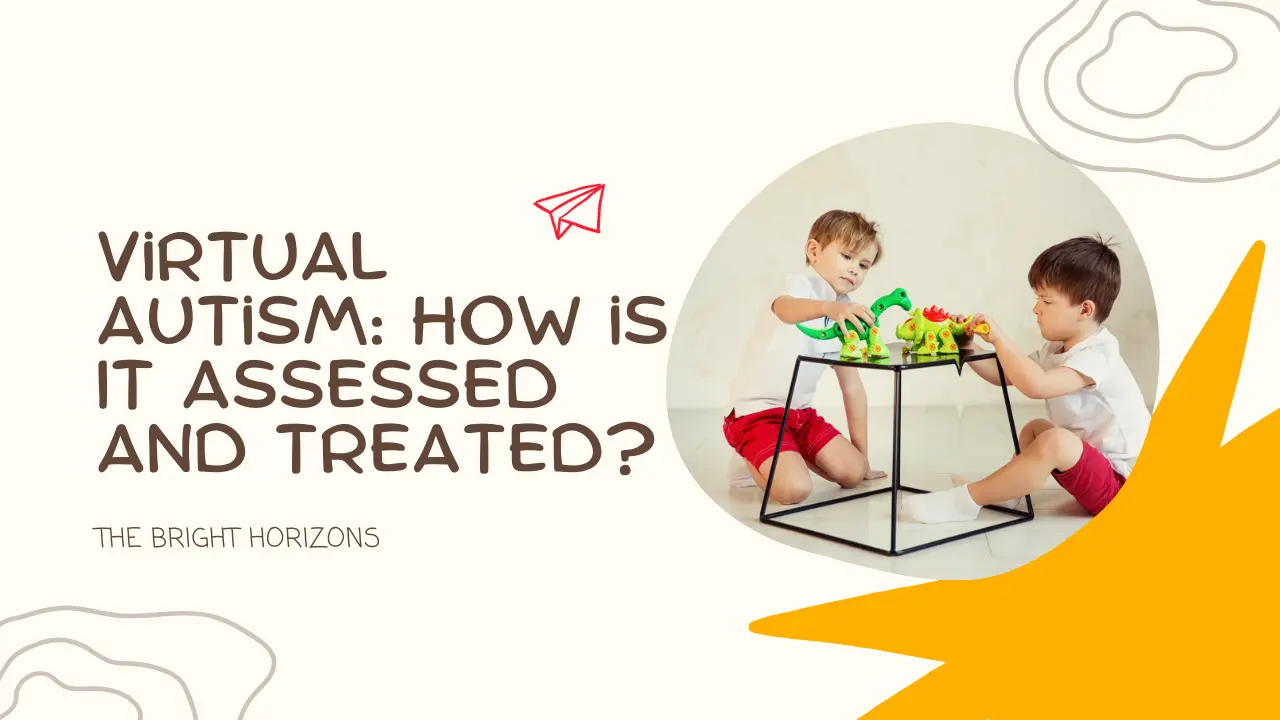You may have heard about autism spectrum disorder (ASD), but have you heard about virtual autism? Many of you may use both terms interchangeably but both of them are different from each other. In today’s blog, we’ll discuss about virtual autism, its causes and possible ways to overcome it. Let’s get started:
What is Virtual Autism?
Virtual autism is a condition where children can be seen using digital devices or mobile screens excessively. It is important to differentiate virtual autism from autism spectrum disorder, as the primary factors and strategies for managing these conditions can vary significantly.
What are Virtual Autism Symptoms?
It is crucial to diagnose the symptoms of virtual autism so that different approaches can be used to treat it early. Some of the common symptoms of virtual autism are mentioned below:
- Hyperactivity
- Frustration and frequent irritability
- Unpredictable behaviour
- Impaired social skills
- Delayed language development
- Excessive exposure to screens
Being aware of these symptoms of virtual autism can help parents take appropriate actions so that they can receive support from a healthcare professional on time.
To learn more about our effective treatments, kindly contact us and feel free to call us at our National Care Number- +91-9800990088
What Causes Virtual Autism?
Various factors contribute to the development of virtual autism, such as:
- Limited physical activity
- Spending too much time on screens
- Lack of face-to-face interactions
- The absence of a balanced lifestyle
Virtual Autism Recovery Time
Don’t forget that each child’s journey in the recovery of virtual autism is unique and time for virtual autism recovery may also vary. However, the following are a few points that will provide you with a general idea about the recovery time of virtual autism:
- Early Intervention
Early intervention can be started between the ages of 2 and 6. With consistent therapy, positive results can be seen and with further improvements over time.
- Duration of Therapy
The time period for the therapy for virtual autism can vary, based on the child’s requirements and the level of intervention. Consistent and regular therapy can lead to positive outcomes.
- Individual Differences
Each child comes with their own set of challenges, strengths, and responses to therapy. Factors such as the condition of a child, severity of autism and the child’s involvement in therapy can have an impact on the recovery time.
- Ongoing Support
Even after significant improvements, continued therapy is important to boost skills, identify new challenges, and promote long-term growth.
Also Read: What are Virtual Autism Symptoms and Recovery Signs
When a child starts recovering from virtual autism, you will notice the following recovery signs:
- The child will start engaging in physical activity
- They will start making eye contact when talking with someone
- Visible improvement in speech
- They will reduce spending time on digital devices
- Improved focus and confidence
- Improved communication skills
- Improved social interactions
Conclusion
Early intervention for virtual autism is only possible if the symptoms are diagnosed on time. Therefore, it is important to always notice your child’s behaviour and identify if they spend too much time on digital devices. If so, you can bring them to us as therapists at Bright Horizons are experts in dealing with virtual autism.
You can call us or WhatsApp for More Details @ our Customer Care Number +91-9800-9900-88
Other Useful Link:-

